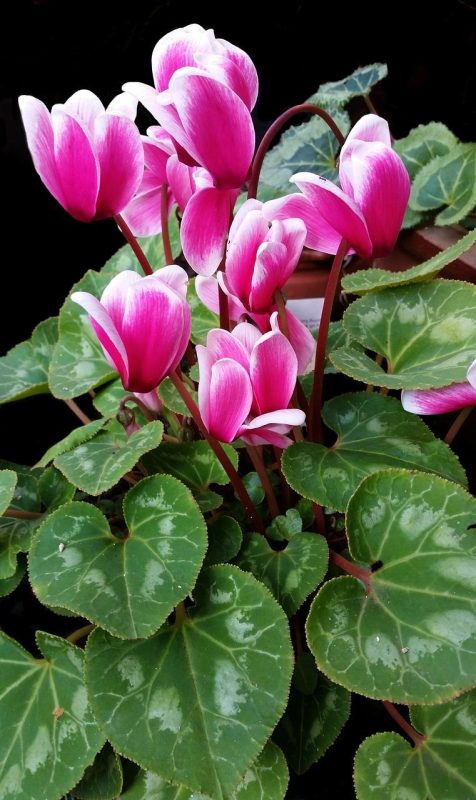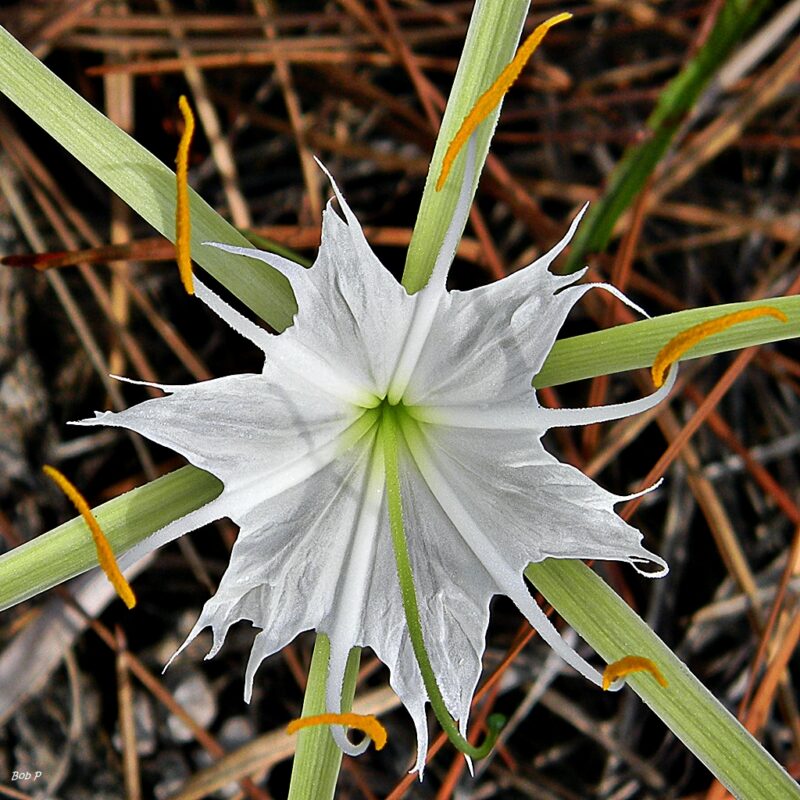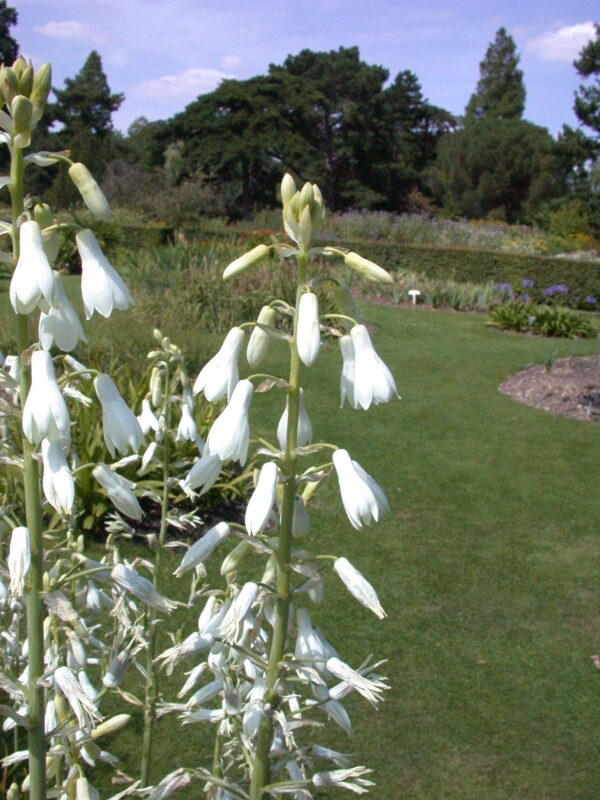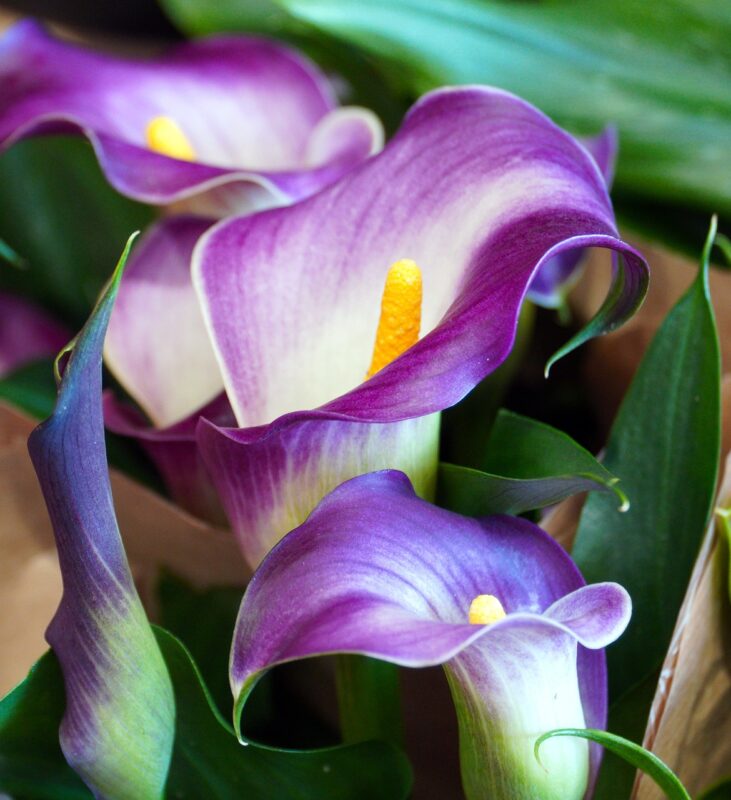On this page, we’ll explore some beautiful bulbs to plant in spring that can transform your garden into a colorful haven.
Lily

Lilies are among the most popular and beloved flowers, known for their stunning blooms and fragrant scent. As spring unfolds, it’s an opportune time to plant various types of lilies, including Asiatic, Oriental, and Trumpet lilies. These beauties thrive in well-draining soil and prefer full sun or partial shade. When planting, ensure they are buried deeply enough to provide stability, usually about 6 to 8 inches deep. With the right conditions, these perennial bulbs can return year after year, often multiplying if cared for properly. Their diverse range of colors and heights makes them a versatile choice for any garden design.
Gladiolus
Gladiolus, commonly known as “glads,” are striking, vertical flowers that can bring height and drama to any landscape. Plant gladiolus corms in the spring when the soil temperature reaches about 60°F (15.5°C). These bulbs thrive in sunny locations and flourish in well-drained soils. A great tip is to stagger the planting of gladiolus every couple of weeks to extend their blooming period throughout late summer. With their tall spikes and wide array of colors, these flowers are perfect for cut arrangements, ensuring your home is filled with fresh and vibrant flower displays.
Dahlia
Dahlias are show-stoppers renowned for their bushy growth and beautiful, intricate blooms, available in various shapes and colors. Planting dahlia tubers in early spring is essential for a stunning summer display. They thrive in rich soil with good drainage and full sunlight. Ensure you plant the tubers with the “eyes” facing upward and cover them with about 4 inches of soil. Dahlia plants often reach heights ranging from 1 to 6 feet, so spacing according to height is crucial. Additionally, pruning spent blooms helps encourage new growth and prolongs the blooming season, allowing you to enjoy their beauty for months.
Canna Lily
Canna lilies are tropical beauties that bring a touch of the exotic to gardens. These vibrant flowers are planted as rhizomes in the spring after the last frost. Canna lilies flourish in full sun and rich, moisture-retentive soil. They can grow impressively tall, sometimes reaching heights of up to 10 feet, making them perfect for garden backdrops or borders. Their large, lush foliage creates a beautiful contrast to the vividly colored flowers that bloom throughout the summer. For those looking to create a dramatic focal point in their garden, canna lilies are an excellent choice.
Calla Lily
Calla lilies are elegant and sophisticated, often associated with weddings and formal occasions. These bulbs, which are more accurately corms, can be planted in spring once the danger of frost has passed. They thrive in well-drained, nutrient-rich soil and enjoy moderate sunlight. Plant these corms about 4 inches deep, spacing them comfortably apart for optimal growth. Not only do calla lilies excel in garden beds, but they also do wonderfully in containers, adding a touch of elegance to patios and decks. With colors ranging from classic white to striking purples, they are an exquisite addition to any plant collection.
Begonia

Begonias offer a stunning array of colors and leaf shapes, making them a versatile choice for gardeners. Plant tuberous begonias in the spring in a well-drained potting mix, ensuring that they are situated in partial shade to full shade. They thrive in moist yet not overly saturated environments, making them perfect for spots in the garden that may not receive direct sunlight. The lush foliage and bright blooms create a beautiful display, perfect for hanging baskets or patio planters. With diligent care, begonias will provide a colorful spectacle throughout the summer months.
Poppy Anemone

The poppy anemone (Anemone coronaria) is a stunning spring-blooming bulb that can add whimsical charm to your garden. These lovely flowers prefer full sun to partial shade and well-drained soil. Plant poppy anemone bulbs in the spring about 2 inches deep, and they will burst forth with vibrant, silky petals. They come in a variety of colors ranging from white and pink to striking blue and purple. A unique feature of poppy anemones is their ability to attract pollinators, making them a beautiful addition to any eco-friendly garden.
Caladium

Caladiums are adored for their dramatic foliage, characterized by heart-shaped leaves splashed with vivid colors and patterns. Plant caladium tubers in warm soil in late spring, ensuring that all danger of frost has passed. They thrive in shady areas, making them an ideal choice for planting under trees or in other shaded spots. Caladiums can create stunning visual displays with their lush foliage, making them perfect for borders or as statement plants in a garden bed. Their vibrant colors serve as a backdrop for other spring flowers, harmonizing beautifully in a mixed garden.
Cyclamen

Cyclamen are shade-loving bulbs that bring a delicate beauty to spring gardens. While often associated with winter blooms, spring-planted cyclamen can thrive in cool, shaded areas. These bulbs prefer well-draining soil and can tolerate some drying out between waterings. Plant them with their tops slightly above the soil level for the best results. The iconic heart-shaped leaves and varying flower colors—from soft pinks to brilliant reds—make cyclamen an elegant addition to any garden. They also pair beautifully with springtime favorites like primrose and violets.
Tuberose

Tuberose (Polianthes tuberosa) is an exotic-looking bulb known for its intoxicating fragrance and stunning spikes of white flowers. Plant these bulbs in late spring, after the danger of frost, in a sunny spot with well-drained soil. Tuberoses thrive in warm climates and can flourish in gardens or containers. They are particularly stunning in mixed perennial beds, where their height and sweet scent can be admired. Harvested for use in perfumes, tuberoses not only beautify your garden but also bring a sensory experience with their mesmerizing aroma.
Crocosmia

Crocosmia, or “Montbretia,” is a robust perennial known for its arching spikes adorned with tubular flowers. These blooms, typically in shades of orange, red, and yellow, create an eye-catching display from mid-summer through early fall. Plant crocosmia corms in spring, approximately 3 to 5 inches deep, in well-drained soil and full sun to partial shade. These plants thrive even in poorer soils and can naturalize over time, leading to lush patches of color year after year. Not only do they attract hummingbirds and butterflies, but they also make excellent cut flowers for indoor arrangements.
Peruvian Daffodil

The Peruvian daffodil (Hymenocallis) is a striking and exotic bulb that features large, fragrant white flowers shaped like intricate starbursts. Plant these bulbs in late spring in an area that receives full sun to partial shade and ensure the soil is well-drained. Peruvian daffodils thrive in warm climates and can add a tropical flair to your garden. Their unique blooms and sweet perfume make them a delightful highlight for any backdrop. Keep an eye out for their speedy growth; when happy, these bulbs can multiply and provide a spectacular display over the seasons.
Agapanthus

Commonly referred to as “African lily,” Agapanthus captivates many gardeners with its beautiful globes of blue or white flowers perched atop tall stems. These perennials thrive when planted in spring in well-drained soil with plenty of sunlight. They are particularly versatile in the garden, as they can grow in containers or directly in the ground, making them a great choice for borders, pathways, or ornamental beds. Once established, Agapanthus plants are drought-resistant and require minimal care, providing low-maintenance beauty for years. Their dramatic flower heads make excellent additions to floral arrangements.
Freesia

Freesias are beloved for their delightful fragrance and vivid orange, purple, yellow, and white flowers. These bulbs should be planted in early spring once the risk of frost has passed. They thrive in well-draining soil and benefit from full sunlight, making them perfect for flower beds or containers. Freesias are known for their ability to bloom in succession, ensuring a long flowering period that can brighten your space for weeks. Their charming scent and long-lasting blooms are perfect for cut flower arrangements, filling your home with natural fragrance.
Ranunculus

Ranunculus, with their layered petals and vibrant colors, can delight any gardener with stunning looks and resilience. These bulbs should be planted in spring, ideally in well-draining soil enriched with organic matter and located in a sunny spot. Depending on the variety, ranunculus can produce flowers from spring into early summer. The blooms can come in a delightful array of colors, including pastel pinks, fiery reds, and bright yellows. Ranunculus plants are perfect as border plants or in pots for a pop of color. Their rich blooms add beauty to bouquets and enhance the overall aesthetics of your garden space.
Red Hot Poker

The red hot poker (Kniphofia) is a dramatic, eye-catching perennial that boasts tall spiky flower heads in fiery hues of red, orange, and yellow. These perennial bulbs thrive in full sun and well-drained soil, making them an excellent addition to a sunny border or a perennial bed. Planting them in spring encourages robust growth that can attract hummingbirds and bees, enhancing the biodiversity in your garden. Red hot pokers can withstand periods of drought once established, and their unique flower structure adds an intriguing shape to your garden’s landscape, making them a thrilling focal point.
Crinums

Crinums are enchanting bulbs that reveal large, fragrant flowers on tall, sturdy stems. They bring an exotic flair to any garden, with blooms appearing in various colors, including pink, white, and red. Plant crinums in spring in a well-drained location that receives full sun or light shade. These bulbs are exceptionally hardy and can thrive in a range of soil types, but they perform best when well-watered during the growing season. Crinums are perfect for creating a tropical atmosphere in your landscape, and their attractive, strap-like foliage provides visual interest even when not in bloom.
Galtonia Candicans

Galtonia candicans, also known as summer hyacinth, is a charming bulb with pendulous clusters of white flowers. Plant these bulbs in spring in well-drained soil and a sunny location, where they will gracefully reach heights of 2 to 3 feet. Their tall spikes of bell-shaped flowers create a beautiful display throughout mid-summer, perfect for naturalized gardens or mixed borders. Galtonia can also serve as excellent cut flowers, adding elegance to floral arrangements without sacrificing garden beauty. Additionally, they are surprisingly resilient and can withstand varying climatic conditions, ensuring they thrive in various gardens.
Montbretia
Montbretia (Crocosmia) adds striking color with its vibrant orange and yellow flowers without requiring excessive care. These bulbs should be planted in spring to establish roots before flowering in mid-summer. They thrive in well-drained soil and prefer sunny locations, where their long flowering spikes attract pollinators such as hummingbirds and bees. Montbretia’s grass-like leaves lend texture and can soften formal garden spaces, making them an excellent choice for mixed borders or wildflower gardens. They are also ideal for cutting and adding to floral arrangements, offering cheerful color throughout the summer months.
Conclusion
As spring arrives, the opportunity to beautify your garden with an incredible variety of bulbs unfolds. Each selection brings unique aesthetic and environmental benefits, from the elegant lily to the exotic crinum. By choosing the right bulbs to plant this spring—in terms of color, height, and growing conditions—you can create a stunning garden space that will flourish throughout the warmer months, rewarding you with a vibrant tapestry of flowers, scents, and textures. Embrace the awakening of nature and enjoy the joy of cultivating a garden that will bloom beautifully season after season.










